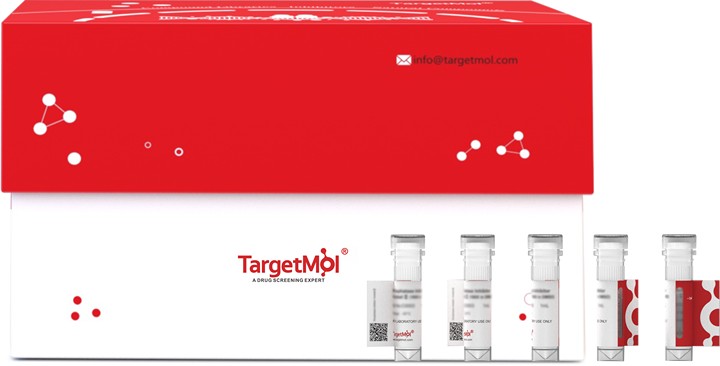Shopping Cart
- Remove All
 Your shopping cart is currently empty
Your shopping cart is currently empty

Retroviral envelope proteins mediate receptor recognition and membrane fusion during early infection. Endogenous envelope proteins may have kept, lost or modified their original function during evolution.; SU mediates receptor recognition.; TM anchors the envelope heterodimer to the viral membrane through one transmembrane domain. The other hydrophobic domain, called fusion peptide, mediates fusion of the viral membrane with the target cell membrane.

| Pack Size | Price | Availability | Quantity |
|---|---|---|---|
| 20 μg | $1,500 | 20 days | |
| 100 μg | $2,750 | 20 days |
| Biological Activity | Activity has not been tested. It is theoretically active, but we cannot guarantee it. If you require protein activity, we recommend choosing the eukaryotic expression version first. |
| Description | Retroviral envelope proteins mediate receptor recognition and membrane fusion during early infection. Endogenous envelope proteins may have kept, lost or modified their original function during evolution.; SU mediates receptor recognition.; TM anchors the envelope heterodimer to the viral membrane through one transmembrane domain. The other hydrophobic domain, called fusion peptide, mediates fusion of the viral membrane with the target cell membrane. |
| Species | Human |
| Expression System | E. coli |
| Tag | N-10xHis |
| Accession Number | P61567 |
| Amino Acid | MVTPVTWMDNPIEIYVNDSVWVPGPIDDRCPAKPEEEGMMINISIGYRYPPICLGRAPGCLMPAVQNWLVEVPTVSPISRFTYHMVSGMSLRPRVNYLQDFSYQRSLKFRPKGKPCPKEIPKESKNTEVLVWEECVANSAVILQNNEFGTIIDWAPRGQFYHNCSGQTQSCPSAQVSPAVDSDLTESLDKHKHKKLQSFYPWEWGEKRISTPRPKIVSPVSGPEHPELWRLTVASHHIRIWSGNQTLETRDCKPFYTIDLNSSLTVPLQSCVKPPYMLVVGNIVIKPDSQTITCENCRLLSCIDSTFNWQHRILLVRAREGVWIPVSMDRPWEASPSVHILTEVLKGVLNRSKRFIFTLIAVIMGLIAVTATAAVAGVALHSSVQSVNFVNDWQKNSTRLWNSQSSIDQKLANQINDLRQTVIWMGDRLMSLEHRFQLQCDWNTSDFCITPQIYNESEHHWDMVRRHLQGREDNLTLDISKLKEQIFEASKAHLNLVPGTEAIAGVADGLANLNPVTWVKTIGSTTIINLILILVCLFCLLLVCRCTQQLRRDSDHRERAMMTMAVLSKRKGGNVGKSKRDQIVTVSV |
| Construction | 1-588 aa |
| Protein Purity | > 85% as determined by SDS-PAGE. |
| Molecular Weight | 68.2 kDa (predicted) |
| Endotoxin | < 1.0 EU/μg of the protein as determined by the LAL method. |
| Formulation | If the delivery form is liquid, the default storage buffer is Tris/PBS-based buffer, 5%-50% glycerol.If the delivery form is lyophilized powder, the buffer before lyophilization is Tris/PBS-based buffer, 6% Trehalose, pH 8.0. |
| Reconstitution | Reconstitute the lyophilized protein in sterile deionized water. The product concentration should not be less than 100 μg/mL. Before opening, centrifuge the tube to collect powder at the bottom. After adding the reconstitution buffer, avoid vortexing or pipetting for mixing. |
| Stability & Storage | Lyophilized powders can be stably stored for over 12 months, while liquid products can be stored for 6-12 months at -80°C. For reconstituted protein solutions, the solution can be stored at -20°C to -80°C for at least 3 months. Please avoid multiple freeze-thaw cycles and store products in aliquots. |
| Shipping | In general, Lyophilized powders are shipping with blue ice. Solutions are shipping with dry ice. |
| Research Background | Retroviral envelope proteins mediate receptor recognition and membrane fusion during early infection. Endogenous envelope proteins may have kept, lost or modified their original function during evolution.; SU mediates receptor recognition.; TM anchors the envelope heterodimer to the viral membrane through one transmembrane domain. The other hydrophobic domain, called fusion peptide, mediates fusion of the viral membrane with the target cell membrane. |

Copyright © 2015-2025 TargetMol Chemicals Inc. All Rights Reserved.